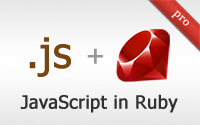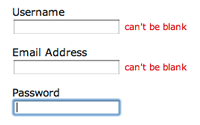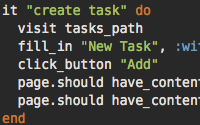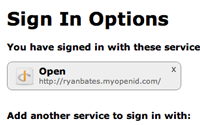Categories
- Active Record
- Active Resource
- Active Support
- Administration
- Ajax
- APIs
- Authentication
- Authorization
- Background Jobs
- Caching
- Code Walkthrough
- Controllers
- Debugging
- Deployment
- eCommerce
- Forms
- Mailing
- Models
- Performance
- Plugins
- Production
- Rack
- Rails 2.0
- Rails 2.1
- Rails 2.2
- Rails 2.3
- Rails 3.0
- Rails 3.1
- Rails 3.2
- Rails 4.0
- Refactoring
- Routing
- Search
- Security
- Testing
- Tools
- Views
Bundler
Bundler is the way to manage gem dependencies in Rails 3.0. Learn how to install gems and lock them down in this episode.
(9 minutes)
CarrierWave File Uploads
CarrierWave makes it easy and clean to add file uploads to your application. It supports a variety of ORMs, frameworks and image processors.
(9 minutes)
Running JavaScript in Ruby
Sometimes logic needs to be shared between the server-side (Ruby) and the client-side (JavaScript). Here I show how to run JavaScript directly in Ruby through ExecJS and therubyracer.
(14 minutes)
SOAP with Savon
Communicating with a SOAP API can be a daunting task. Savon makes this easier by presenting the SOAP API through a Ruby interface.
(9 minutes)
Client Side Validations
Showing validation errors inline as the user is filling out the form can lead to a better use experience. Learn how to do this using the Client Side Validations gem.
(8 minutes)
Beginning with Cucumber
Cucumber is a high-level testing framework. In this episode we will create a new Rails application from scratch using behavior driven development.
(15 minutes)
Mobile Devices
Change the look and behavior of a Rails app on mobile devices. Also use jQTouch to build a native-looking interface.
(13 minutes)
Request Specs and Capybara
Request specs in RSpec are a great way to ensure the entire application stack is working properly. Here I also show how to use capybara with integrated JavaScript testing using Selenium.
(13 minutes)
OmniAuth Part 2
In this episode we continue our look at integrating OmniAuth with devise. Here I show how to set up new users with validations.
(15 minutes)
Simple OmniAuth
Authentication is incredibly simple to add with just OmniAuth if you don't need username/password or multiple authentications per user.
(9 minutes)










